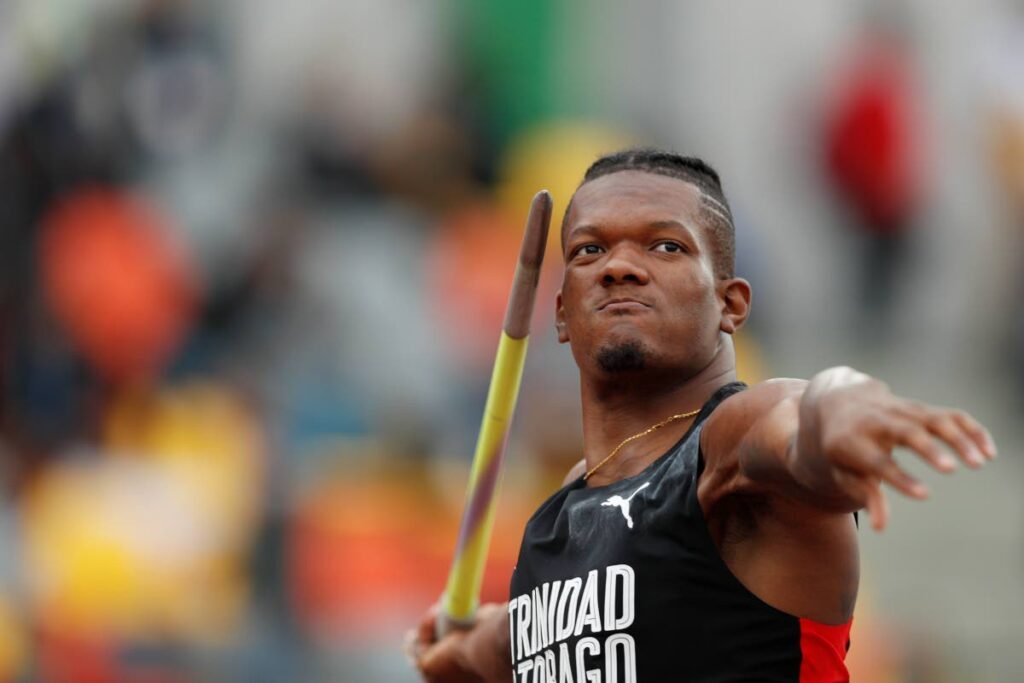FOR 2022, Trinidad and Tobago double-Olympic men’s javelin medallist Keshorn Walcott wants to throw further.
“I don’t have a set distance I would like to achieve but I want to consistently throw over the 90-metre mark. That’s the goal, to throw far,” he said.
Walcott, 28, has only ever surpassed the 90m distance, during competition, at the 2015 Diamond League Meet in Lausanne, Switzerland, where he won gold with a monstrous 90.16m effort on his first attempt.
Last year, he established his second-highest career distance and season-best by launching the spear 89.12m at the Kuortane Games in Finland. However, he was unable to carry this momentum into the Olympic Games one month later, owing to discomfort in his Achilles.
In pursuit of his athletic goals this year, Walcott and his Cuban coach Isamel Lopez Mastrapa have tweaked specific elements of his training regime and competition schedule.
They’ve already resumed training in full for the season and are potentially targeting one or two track and field meets in the US, in March, to use as a measure of his progress thus far.
“Training has been good; the normal ups and downs. Depending on how I feel after the next three to four weeks, I plan to try to get a competition early in the US. I’m trying to approach this year differently as compared to the past.
“I normally never compete this early so I’m trying to see if it would be beneficial for me to get two competitions in March. If you pay attention to when I go to Europe, my first two competitions are almost kind of mediocre, in terms of distance.
“I want to try to shake that off before I actually go back to the European circuit. So I wouldn’t have any thoughts or pressure on myself. But it all depends on how I feel,” he said.
If he does compete, Walcott plans to return to training in Trinidad in April, then chart off to Portugal to train and compete for a couple of months.
Once all goes well, he remains hopeful to compete at the IAAF World Athletics Championships (July 15-24) in Oregon, USA and Commonwealth Games (July 28-August 8) in Birmingham, England.
The hulky field athlete trains six days per week, does double-sessions on some days and even joined a pilates class to work on his flexibility. He’s definitely upped the ante.
“The only thing that will change is that it’s (training) a bit harder on my body. When I have to do throws or anything pertaining to the javelin, it would be at a higher level than I would usually do in this period of time. So it would be more dynamic,” he added.
In the lead up to last year’s Tokyo Games, Walcott sustained an Achilles injury which was the key element in him finishing outside of the 12 advancing finalists.
He has not yet fully recovered but has come to realise the dire importance of proper recovery as an athlete. Walcott has since reapplied different methods to train and is now “working smarter.”
He continues to work with his chiropractor Dr Alban Merepeza and coach Mastrapa to return to full potential.
The particular injury took a hefty toll on Walcott, who was distraught when he faltered on the Olympic stage. This, he said, was a learning experience.
“I’ve learnt that I cannot wait for things to happen and then try to be on top of it. If it’s one thing I’m trying now is to stay on top of the injury. I’m trying my best to see my chiropractor as often as possible, so it wouldn’t reach a stage where we have to fight to be functional.
“I knew recovery was crucial but I never really paid much mind to it. At that age, mid-20s, you think you can do whatever, stay up and late and you would be good to go. But now it’s different.
“Sometimes you do a hard session and take two to three days to recover. It’s just about how your body functions and keeping on top of that. It’s not about training hard but training smart,” he said.
Walcott credited Mastrapa and Merepeza for guiding his recovery and development journey and was pleased he “doesn’t have to figure these things out” himself.
Proper maintenance of his body and throw technique remain a top priority for Walcott in 2022. According to him, he’s not getting any younger.
“We need to build on the foundation we laid for the past ten years. Now it’s just about preservation. Your body is so accustomed, it answers. I’m getting older and cannot leave it up to training alone.
“I need to pay more attention to the things I do outside of training in terms of recovering. The goal is to remain healthy, stable and throw far. I know once I’m throwing far and enjoying it, everything else will fall in line.
“I must enjoy what I am doing now just like when I was a junior athlete. These are my ending years and I would like to have that same feeling like when I started.
“Injuries and other obstacles come but you’re always going to learn little things from the year before to take you into the other,” he concluded.

